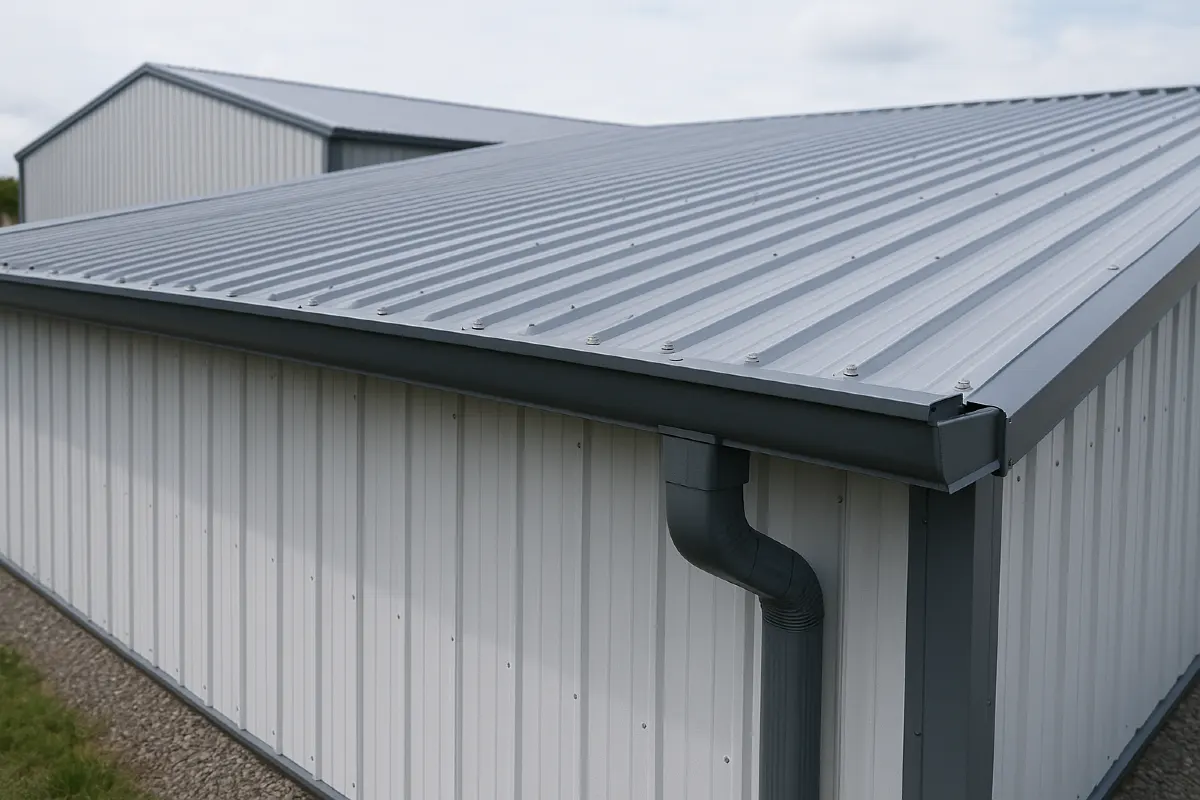Coastal New Brunswick presents site-specific constraints that influence structural design parameters. Seasonal snowfall, consistent rainfall, and cold temperatures can place extra stress on roofing systems. For long-term performance, water must be directed away from both the roof and the base of the structure.
Effective drainage is critical to preserving both material performance and functional longevity; especially in steel buildings New Brunswick, where variable coastal weather exerts considerable impact on design strategy. Integrating proper roof drainage systems during the early planning phase reduces long-term deterioration and supports overall structural integrity.
Why Coastal Locations Require Targeted Roof Drainage
Higher rainfall, strong winds, and seasonal freezing contribute to drainage issues that can affect both structural integrity and safety. Without proper planning, water may accumulate in areas that cause wear, corrosion, or excessive pressure on the foundation, potentially leading to structural damage.
To reduce these risks, drainage systems should account for:
- The direction and rate of rainfall-runoff
- Consistent removal of snowmelt
- Protection against ice buildup at the roof’s edge
- Downspout placement to guide water away from the base
How Roof Shape Affects Drainage Success
The slope and design of a roof determine how easily water and snow can be removed from the structure. In many coastal settings, a pitched roof is more effective than a flat one. Steeper slopes help snow melt, and rainwater drains before buildup becomes an issue.
For metal buildings, gable and single-slope roofs are usually preferred. These shapes facilitate the control of water flow and reduce the likelihood of pooling. For buildings with larger surface areas or unique layouts in New Brunswick, planning multiple slopes may support more balanced drainage.
Important Gutter and Downspout Features
An efficient roof drainage system must include well-designed gutters and downspouts to direct water away from the building safely. These components play a direct role in preventing moisture buildup along the roofline and foundation. In coastal environments, it’s essential to select materials that can withstand corrosion and temperature fluctuations.
Some features to consider include:
- Wider gutters to accommodate heavy rain or melting snow
- Downspout placement that follows natural water flow from the roof slope
- Protective add-ons like splash blocks, snow guards, and leaf screens
- Durable finishes that minimize rust over time and require less maintenance
Planning for Seasonal Drainage Challenges
New Brunswick winter creates added pressure on roofs due to ice dams and frozen runoff. If water from melting snow is not drained properly, it may freeze along the edges and trap more moisture against the structure.
This can lead to surface damage or added weight on the roof system. Solutions include proper roof ventilation, insulation under the roofline, and optional heating cables in key areas. Removing debris before winter begins also helps prevent clogs and ensures smoother drainage throughout the season.
Selecting the Right Add-Ons for Effective Roof Drainage
New Brunswick suppliers offer customizable steel building kits designed to meet various drainage needs. These features include adjustable roof slopes, load ratings, and optional upgrades for gutters or downspouts.
Many providers also offer features like roof bracing and drainage add-ons. Buyers typically select materials based on seasonal demands and project goals. Choosing a supplier familiar with local climate conditions can help ensure more effective and reliable roof drainage from the outset.
Planning for roof drainage is a critical step when designing steel buildings in New Brunswick. Coastal conditions require attention to slope, gutter design, and seasonal protection methods to ensure water is safely moved away from the structure.
With the right system in place, these buildings are better equipped to handle moisture-related stress while maintaining long-term function, safety, and efficiency across all seasons.
